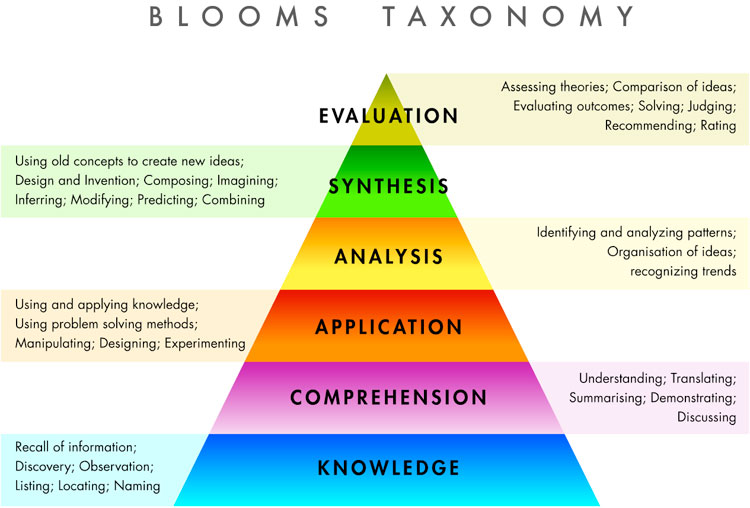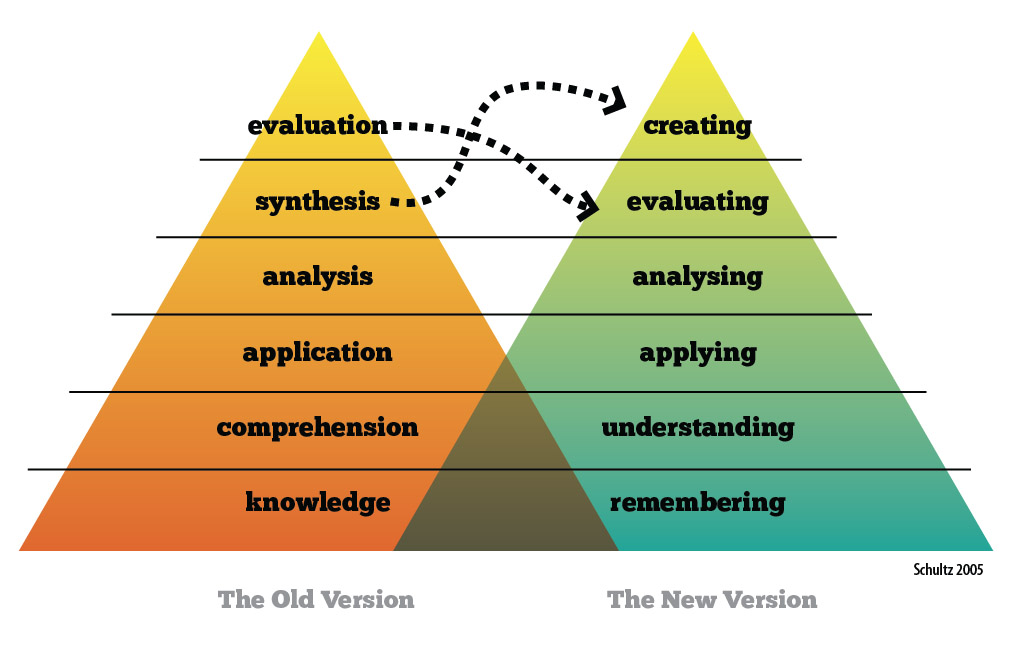Effective Learning Objectives
Establishing learning objectives for your course is one of the most important and significant steps in the planning process. In the last section you explored the importance of aligning course goals with learning objectives. So now, it is time to make sure that you have effective learning objectives to guide your decisions about what content needs to be taught and to keep you focused on what the learners will be able to do at the end of the instruction.
In higher education, best practices endorse Bloom's taxonomy as a classification method to guide the writing of learning objectives and you will explore what that means through a group webquest.

As you work through your discovery activity you will learn that the taxonomy has been updated in the not so distant past, showing a reversal of the top two categories:

This is a good reminder that in learning design, nothing is ever 'written in stone' and the design process is iterative as it changes as you learn more about the content, your learners and the context and environment around you.
